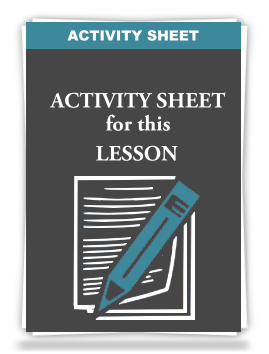- Home
- How I Help
- Identifying the Five Steps To Selling! [ARTICLE]
Identifying the Five Steps To Selling!
Psychologists suggest that in the transaction of selling or buying, whether transactional or relational, five essential steps must be taken by the sales professional – our brain evolves through five essential states when going through the buying/affiliation process. Sales professionals must understand each step, know how to accomplish the sequential objectives of each step, and know how to move the sales dialogue from one step to the next.
The five psychological steps or phases to selling are:
- 1. Attention
- 2. Interest
- 3. Presentation
- 4. Desire
- 5. Close
“Attention” means getting the prospect’s attention despite any distractions or preoccupation, so that the focus is on breaking their predisposition as you engage them to be able to enter into an effective conversational sequence of the next steps. Sales professionals need to identify polite, smooth phrases that can be used to grab a prospect’s attention, establish fast rapport, and move the conversation to the more important second step, Interest.
Think of the Attention step like the awareness phase, how do you grab and keep the other person’s attention? You can draw upon a wide scope of ways to do this – words, imgaes, pictures, noices and voices, colors, etc., can be deployed to capture someones attention so you can sequence them in the direction you desire.
Once Attention has been attained, your job is to effectively transition into the second step or phase of identifying the needs of the prospect or customer. Determine whether you can address those needs. In the critical second step or phase, the “Interest” step of the sales process, you must invest ample time, exploring the prospect’s or customer’s immediate needs and continual needs and the ways in which you can meet those needs.
The Interest step is the most important step to invest time in. Otherwise referred to as the needs-analysis phase or the discovery phase or the questions-and-answer phase or the indentification the buyers needs-goals-aspirations phase, this is best accomplished as conversational approach. Ask thoughtful questions that stimulate informational responses from prospects or customers. Take notes while the prospect is answering, so you can limit the number of interruptions. Some of the best Interest questions are open-ended questions that stimulate dialogue between you and the prospect or customer. Asking open-ended questions encourages the customer to open up and provide you with a quantity of information.
If you analyze your best customers, you should be able to design a core profile of characteristics of that customer. From here you can create a series of qualifying or dis-qualifying questions as a template that you can use to more efficiently engage suspects, prospects and existing customers to further serve them.
Once you have identified the needs of the prospect via the Interest step, you will be able to determine if they have needs, challenges, problems that you can provide solutions for. If there is no solution you can provide or that you can recommend to them from another vendor, then there is no step or phase three, it is time to shut-up and transition out of that conversation, as there is no solution and any further interaction means you are wasting time talking to someone that can’t buy, has no need, and can provide no forward further advocacy.
If you do have a singular or series of solutions, that now you have a meaningful engagement need. Determine what is your single most dominant solution and fixate solely on this. So, now it’s time to transition into the third step or phase. Make your best Presentation of the appropriate product or service for the customer. The Presentation is based upon the Claim + Feature + Benefit + Naildown sequence.
- 1. Claims are the assertions one may make in the opening statement, “This XYZ is the newest, best, greatest, fastest … and “est” words
- 2. Fact or Features are the tangible or the fact portion of your statement in regards to what it will deliver
- 3. Benefits are the “what this means to the client or customer” statements and the what it will do for you; This is the statement or conversation aspect that speaks to the other parties needs or pain points and will motivate them to want to take action
- 4. Naildowns are confirming questions you can pose directly associated to what you have just presented to solicit immediate feedback from the person that you are talking with, to gain engaged confirming buy-in into what you have presented … You are wanting them to mentally take ownership of your presented solution and get them to acknowledge that “yes this is what I want” …
After the Presentation, move the sales conversation toward illustrating how the prospect or customer will benefit by proceeding with your recommendation. This fourth step or phase helps to build a level of Desire within the customer for what you have to offer. Here is where you can present a situationally appropriate story or examples of what their life will be ike using your offer.
Of course, a sale is not a sale until the figfith a final stage. Sales professionals must understand how to ask for the order, or Close the sales process. This final step in the selling process depends on the ability and confidence of the sales professional. If you are spending undue time on this fifth step, you may not be investing enough time in step two, Interest.
The art of the Close is about engaging the level of receptiveness to buying of the prospect or customer. Ask questions that allow you the flexibility either to finalize the order or to digressing if necessary. Focus on two types of closing questions:
- 1. Trial Closes or Alternate-of-Choice are opinion-asking questions. They help you to determine the customer’s readiness to making a buying decision. An example of a Trial Close is: “If you were to go with this style widget, would you want to place the order on account or pay cash?”
- 2. The Order Close seeks a commitment from the prospect or customer. This Close question is used when you are confident that the prospect or customer is ready to take ownership of your product or service. An example of an Order Close is:
Every sales transaction involves all five selling steps. The sales professional must be able to gauge how much time to invest in each step, before moving to the next step.





